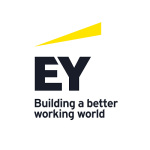In the past decade, there was a pretty standard recipe for designing an effective and efficient operating model for businesses in Asia. It also applied across many sectors, from consumer goods to industrial chemicals. You would have a central management hub buying from related and/or unrelated suppliers and selling to related and/or unrelated customers. Co-located central functions like procurement, supply chain and innovation create synergies across the business.
Usual criteria for selecting a hub location are political stability, good infrastructure like roads, sea and airports, but also network capacity (5G), availability of skilled labour and enough office space. Tax and incentive regimes, for example, in China, Malaysia, Singapore and Thailand, would allow the hubs to capture the value they add and profits they book at favourable income tax rates and/or to enjoy other subsidies and benefits.
This operating model template is rapidly changing as a result of several long term and more recent trends. In the future, we are less likely to see single hubs but can expect multiple sub-regional hubs and more decentralised ways of working. Cost pressures may push jobs out of the very expensive metropolitan areas to places where one can still find skilled labour and office space at more reasonable levels.
The COVID-19 pandemic has accelerated the end of co-location of workers and firmly installed a ‘work from anywhere’ ethos. In summary, the new operating model template is one of decentralised networks. This also has major consequences for how operations are designed from a tax perspective and what a tax effective operating model looks like.
How to be tax effective?
In the public mind, the term tax effectiveness is often associated with the acronym BEPS, but this is doing international businesses and tax functions a great injustice.
In designing any significant cross-border operation, one needs to deal with many complexities and determine the best way to create value for customers, as well as how to meet all legal and tax obligations, like for trade compliance and paying income taxes where there is a taxable presence.
Ensuring that operations are tax effective, is usually understood to involve the following four aspects:
Profit allocation and effective tax rate (ETR)
Ensuring that profits are allocated and reported in the right locations in line with the functions, assets and risks (FAR) profiles and ensuring that the taxpayer enjoys all tax advantages that it is legally entitled to, e.g. subsidies and rate benefits for advanced research and development (R&D) activities;
Trade compliance, working capital and landed cost optimisation
Designing and maintaining appropriate trade procedures and documentation, as well getting the benefits from free trade agreements (FTA) and improving VAT and goods and services tax (GST) cash cycles to reduce working capital.
Efficient compliance and reporting
An operating model and its systems should be designed to allow timely reporting and filing as required for the various tax purposes. In practice this means practical transfer pricing (TP) procedures that are automated and with timely warning if adjustments are required.
Similarly, automation and dashboards can help monitor and manage trade compliance. Avoiding unnecessary complexity, e.g. too many layers of buy-sell transactions for one goods move or spiderwebs of inter-company services, is the first key step in creating an effective tax management set-up.
Reducing the risk of tax controversy
Transparency in tax reporting and documentation can avoid a lot of unnecessary time spent in audits and procedures with tax authorities. This requires TP documentation that goes beyond the basics and provides real insight into how the business works.
Upfront agreement with authorities through unilateral or bilateral advance pricing agreements (APAs) can be a wise investment for difficult transactions. Especially in Asia, approaching authorities up-front and simplifying the transactional structure, can be very helpful.
Demographic and economic trends
The importance of China as the manufacturing base for the world and the subsequent increasing purchasing power of its population required having Asian management close to that market, but maybe not necessarily in it as that could distract from other business. Hong Kong SAR is ideally situated and offers a strong package of business, tax and legal factors, which made it a key location for Asian management and trading hubs in the 90s and first decade of the 21st century.
|
|
“The COVID-19 pandemic has accelerated the end of co-location of workers and firmly installed a ‘work from anywhere’ ethos.” |
|
|
Over time, however, the centre of economic gravity has shifted more westward in Asia, based on the high population growth and associated demand in South East Asian markets and on the Indian subcontinent, as well as due to rising costs in China.
Sourcing in a sector like fashion apparel has made a journey to China, followed by a shift to Vietnam, India, Sri Lanka and Bangladesh and nowadays to Ethiopia, Turkey and back to the Maghreb countries, where some of it started many decades ago. With the continuing and growing importance of the Chinese economy, many companies are still setting out to establish a strong headquarters (HQ) in China itself.
The simple point is that the centre of economic gravity in Asia has shifted, often not in a binary way and often not in the same way for different industries, but rather to a situation where a business needs several hub locations to operate effectively. Many multinationals will today or tomorrow have a China HQ, and/or separate North East Asia and South East Asia management hubs.
Finally, the maturing of markets also requires management that is closer to the supplier and customer bases to allow quicker decision-making and localisation of products and services. Especially for commercial functions, there has been a trend to move away from the strong centralisation, while areas like procurement and supply plain planning are still able to drive economies of scale and scope centrally. Therefore, the nature of the Asia management hub is evolving from a complete management team to one comprising only specific functional areas.
Technology and digitalisation trends
An important driving factor for the centralisation described before has been the development of sophisticated enterprise resource planning (ERP) software which itself requires harmonisation of data and standardisation of processes, but also improves efficiency of a business.
Design and implementation of new ERP systems was often coupled with the design of centralised trading models. Standardisation is still key, but the modern cloud-based generations of the ERP systems provide flexibility and allow companies to work as virtual networks. Blockchain technology can also help track and manage production and trade in a network in real time. The need for co-location of functions and management teams has been greatly reduced.
Many businesses are completely transformed by digitalisation and/or have added digital services to their product offerings. One example is when a company applies 3D printing technology, and, where products used to cross borders, now only software instructions are sent, and the product is manufactured in the destination market. The transaction logic of services is different from that of products and existing trading hubs, including their indirect tax and TP arrangements, will have to be adapted.
Geopolitical trends
In recent years, trade wars and the threat of increasing and punitive customs duties have forced the redesign of sourcing and manufacturing networks, either to escape the additional duties based on a changed origin, or to mitigate financial impacts by redesigning the legal and financial flows.
In certain sensitive sectors, e.g. for medical equipment and semiconductors, new regulatory constraints like export controls are forcing companies to consider decoupling their supply chain, including intellectual property (IP), for different markets. Such decoupling requires a redesign of every aspect of the organisation from how the smallest parts are sourced to where the IP is created, owned and used, and even to the ownership structure of the company itself.
In the context of Asian operating model design, decoupling has triggered a search for ‘neutral’ holding and IP ownership locations, as well as (contract) manufacturing locations outside the sensitive markets.
Regulatory, including taxation, trends
It would not be fair to blame all the change on non-tax factors as the tax and regulatory framework itself is also subject to strong change forces.
Globally, the implementation of the OECD BEPS framework has driven changes in how multinationals organise their distribution with many now operating buy-sell distributors in the different markets where they used to deploy only sales support teams.
Many countries had to cancel or adopt their tax incentive arrangements. Singapore, for example, carved IP out of its existing incentive scheme and created a separate arrangement for IP income, while the so-called International Business Center (IBC) regime in Thailand is now only available for services.
A next wave of change is coming, again driven by the OECD and big economies (G7/G20), but also from the EU and the US. If one had to distil one key message from the very broad and complex measures that are being proposed, it is that, if the measures come into force, allocating profit to low tax jurisdictions will be restricted and rendered ineffective. If the effective tax rate is below a certain threshold, currently proposed at 15%, the income can be taxed by the taxpayer’s parent jurisdiction or other counter measures, like denial of deduction of payments to low tax jurisdictions, will be triggered.
Mainland China’s incentivised tax rates for high tech companies or in certain free trade zones, at 15%, may still be effective, but lower results, like 5% or 10% incentive rates in Singapore, or low Hong Kong SAR rates resulting from (partial) offshore sourced income, may not escape the proposed measures.
Sustainability trends
The United Nations’ Sustainable Development Goals and related environmental, social and governance (ESG) considerations are of increasing importance to companies and their stakeholders. The aim is to provide long term value and stop the depletion of the Earth’s resources.
There are direct consequences for the area of taxation, for example when companies provide transparency regarding their tax policy and how much tax they pay and where. Many new sticks are being introduced, like plastic taxes and carbon border adjustment taxes, while there are also carrots in the form of incentives and subsidies for green technology development.
In addition, the tax function must analyse and react to all the changes in the physical supply chain, e.g. changing to shorter supply routes with less carbon emissions footprints and using more recycled input materials, as well as in the financial operations, e.g. with respect to carbon emission rights trading.
The new Asian operating model
Every business is unique and there is no one size or style that fits all, but, based on the history and trends driving change, there is a clear shift in the key design elements of operating models in Asia.
Historically, many companies operated linear value chains through centralised trading hubs and limited the profiles of their manufacturing and distribution operations. Key decision-making functions and valuable assets, like brands or technology IP, were often co-located at the central hub and the accumulation of sophisticated jobs and investment meant the company could obtain favourable tax and other incentives.
The archetype is moving towards a more decentralised network structure with multiple hubs that have different geographical and/or functional focus. Commercial decision-making may be local while procurement has more centralised responsibilities.
The network structure and more complex web of goods and services transactions, as well as the addition of data flows and different IP contributions, no longer allows the simple and efficient transfer pricing model where a central hub buys and sells goods at benchmarked prices.
The networked operating models often require more flexible arrangements, like profit splits, cost contribution arrangements and branches instead of legal entities. More complexity will be rewarded with more flexibility. The new requirements of transparency in tax matters align with all these options.
Nowadays a company may want to focus more on subsidies and incentives it can obtain for various activities in multiple locations, like for green research and development or energy efficient production, whereas in the past it would have obtained one major incentive centrally.
Click here to read EY's Asia-Pacific Guide 2021
Edvard Rinck |
|
|---|---|

|
Partner Hong Kong, Hong Kong SAR T: +852 2846 9888 Edvard Rinck is a partner who leads EY’s operating model effectiveness (OME) practice in Asia Pacific based in Hong Kong SAR. He has close to three decades of experience working in multinationals and as a consultant. In 2000, he joined the OME practice and subsequently worked in the Netherlands, the US, Switzerland, Singapore and Hong Kong SAR. Over the years, he has worked on a large number OME engagements as a work stream leader, project manager and engagement leader. He has advised US, European and Asian multinational companies regarding the establishment of regional as well as global supply chain management structures, around different headquarter locations. Edvard holds degrees from Nijenrode University and Erasmus University in the Netherlands. |












